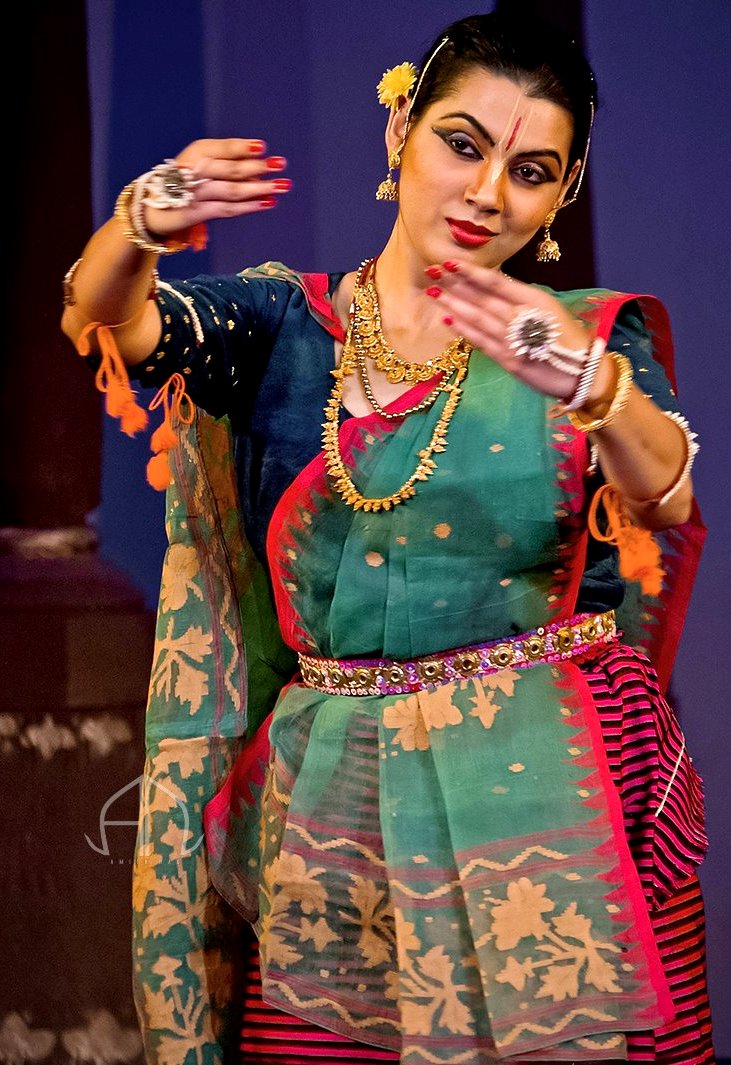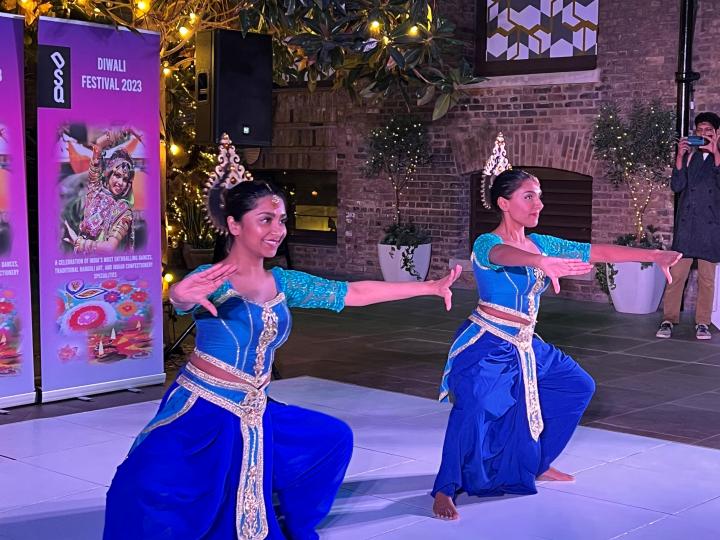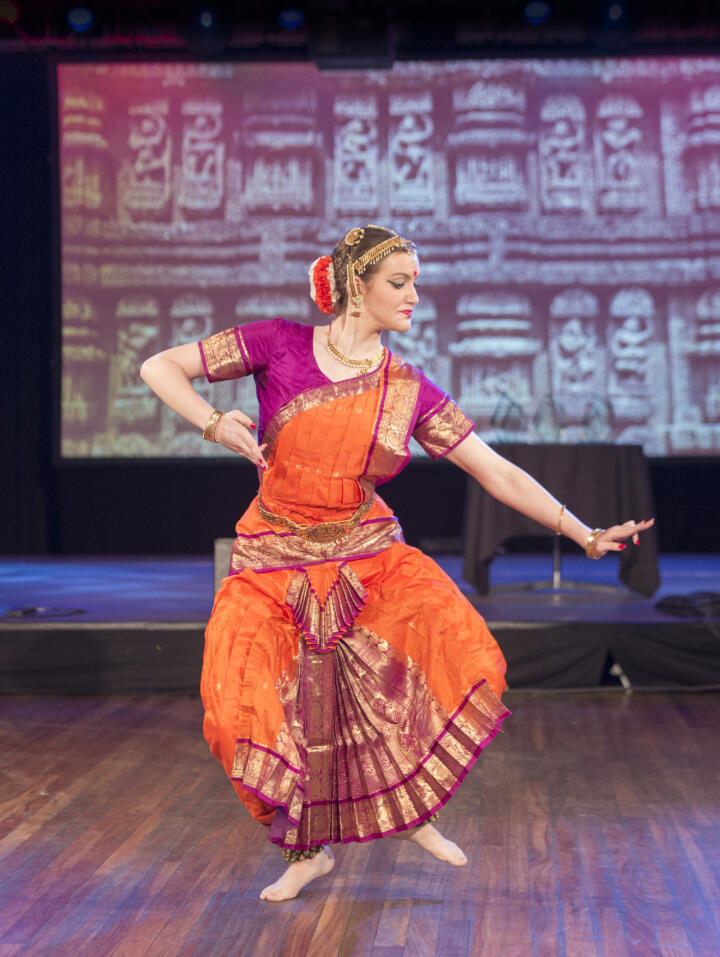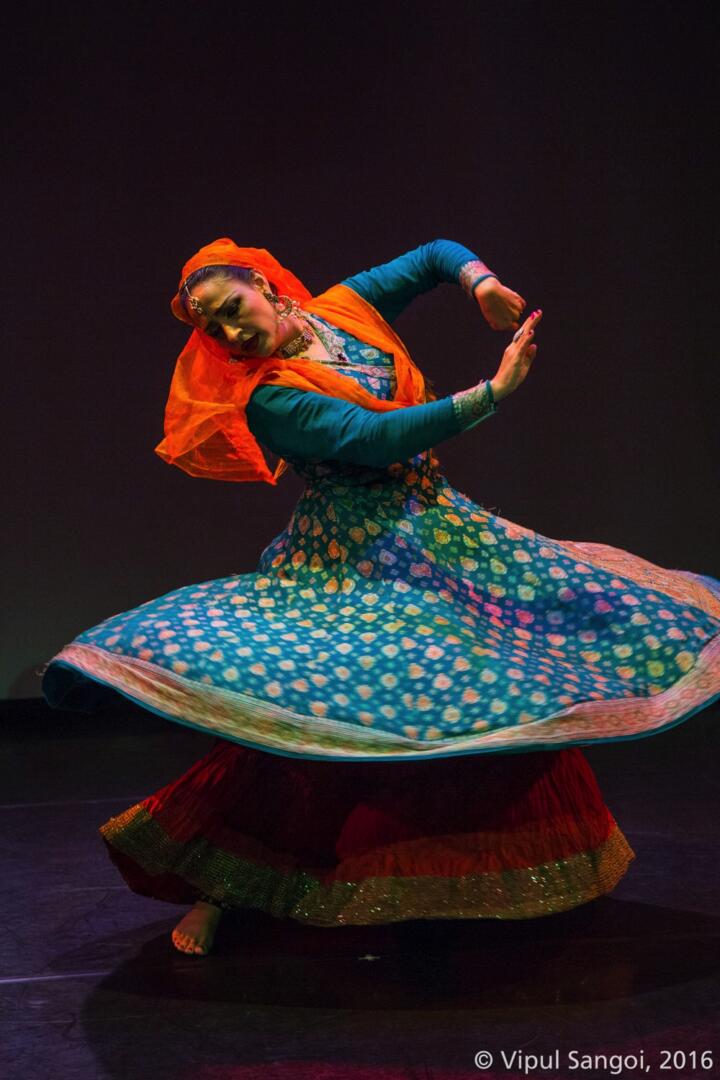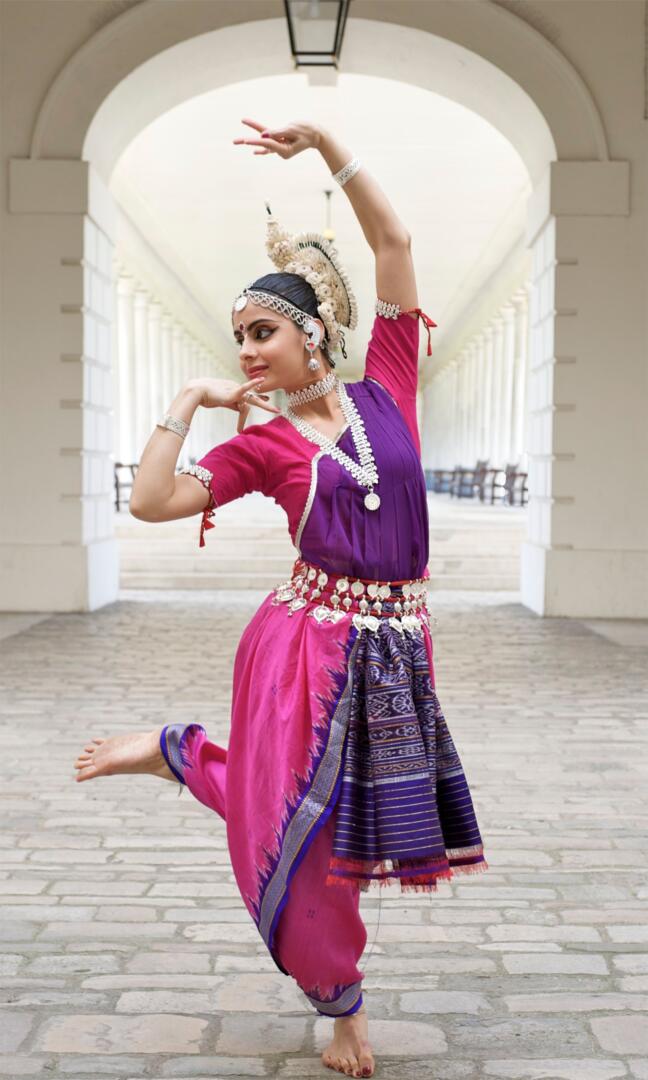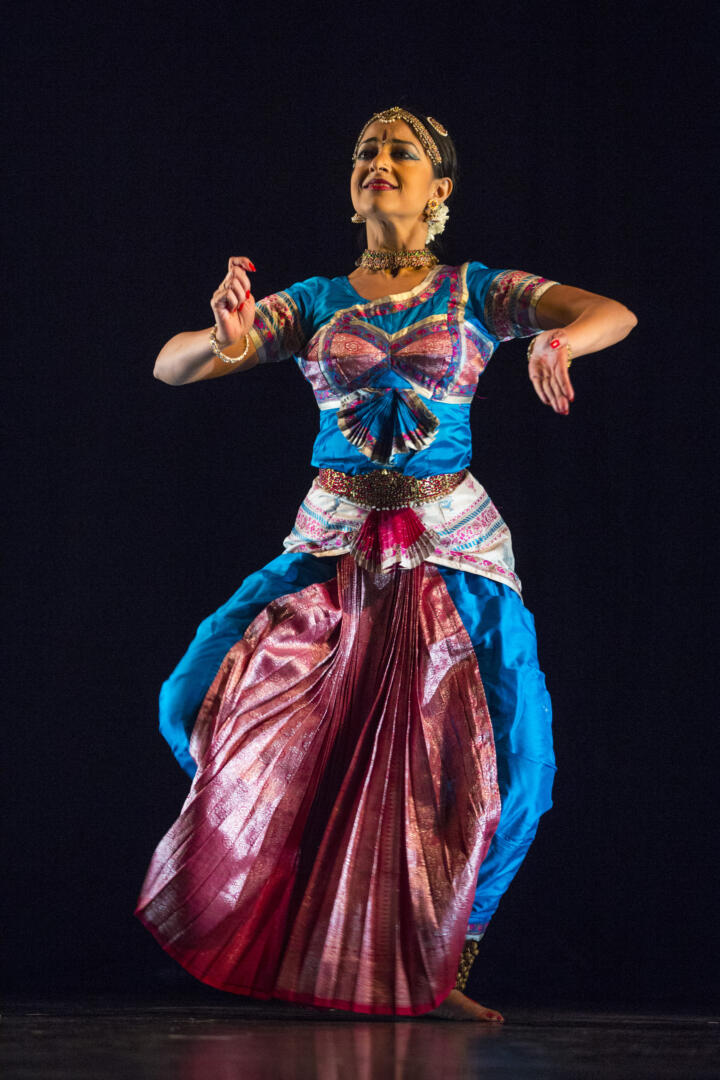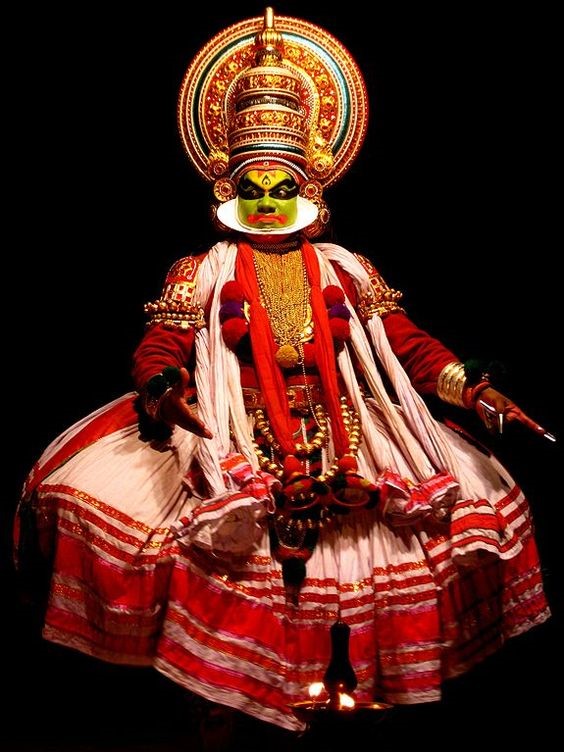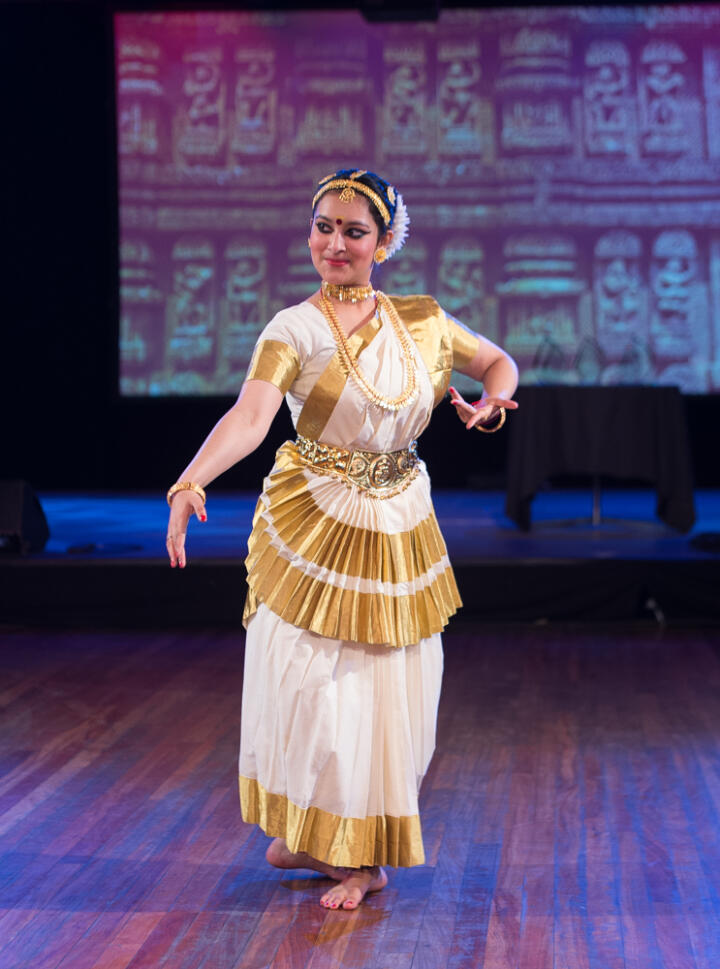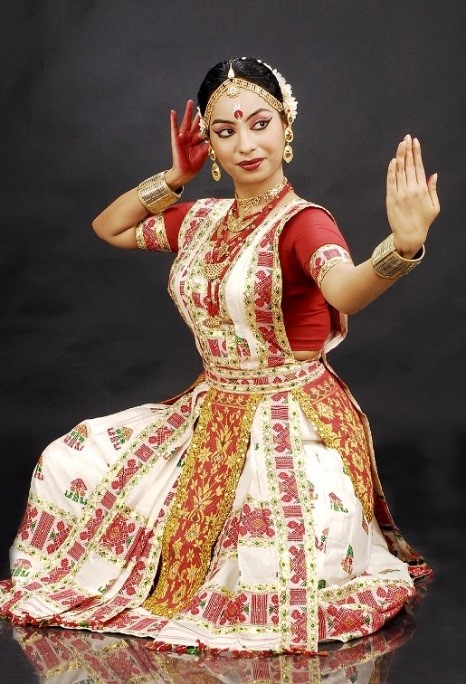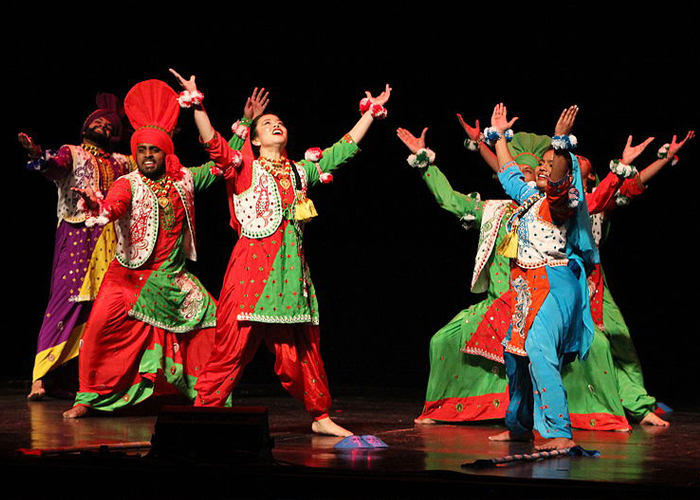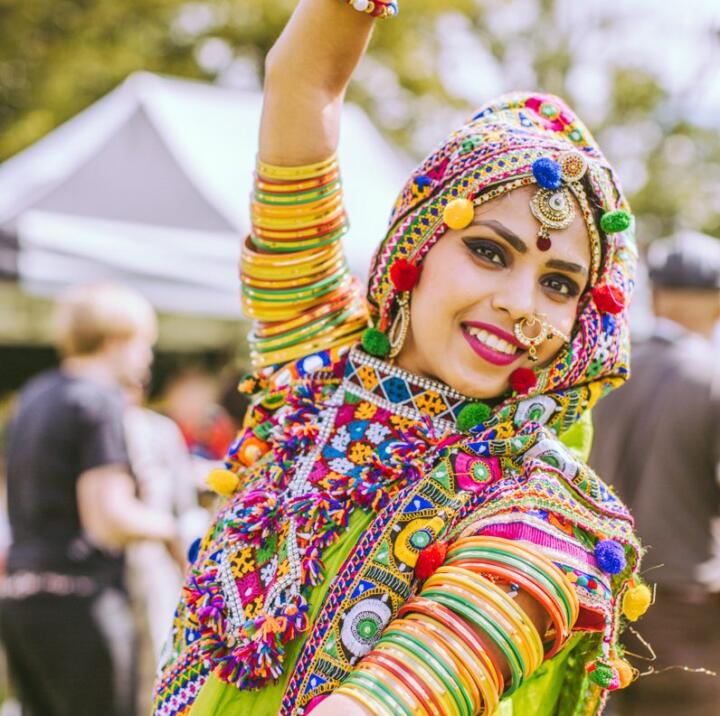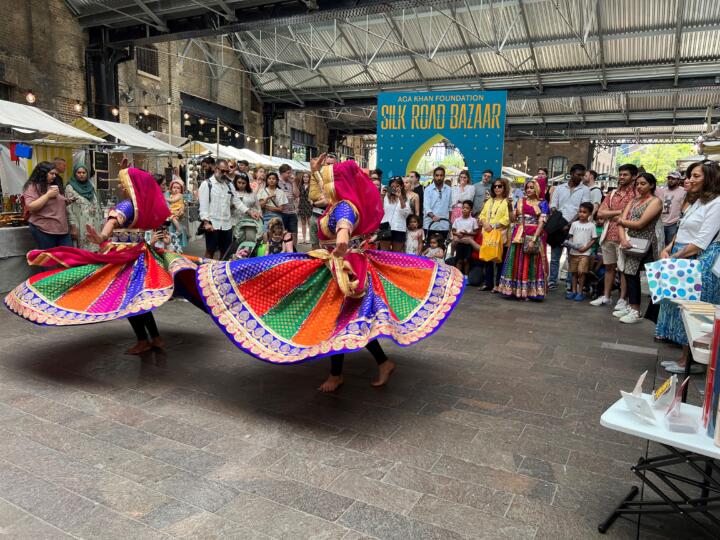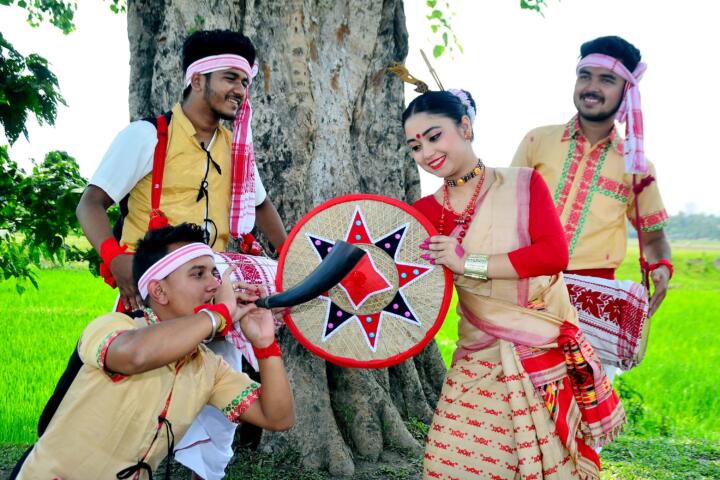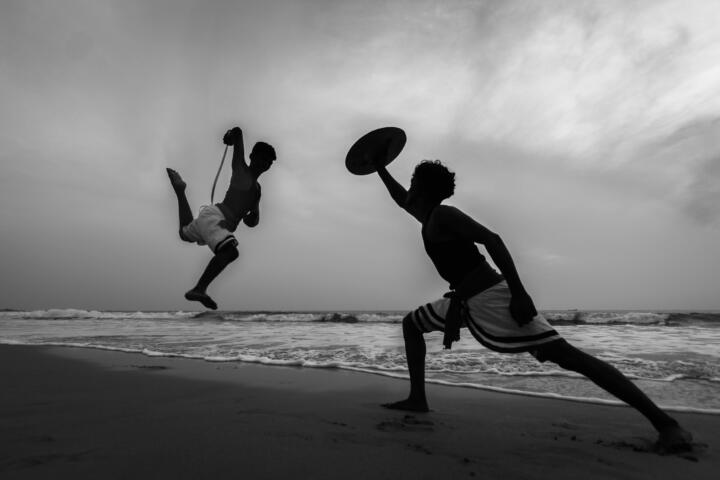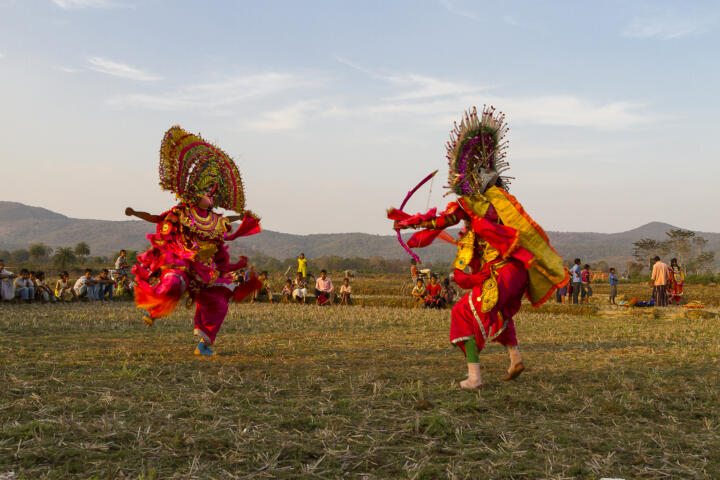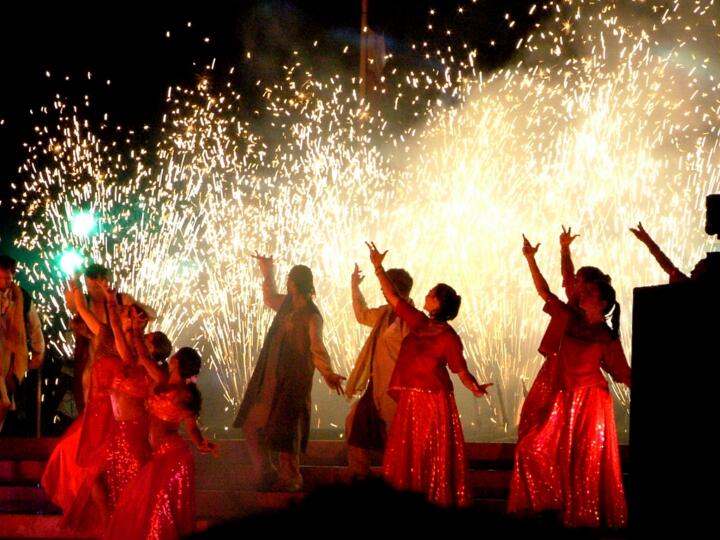Manipuri
A guide to Manipuri
Manipuri originated in the state of Manipur in the north-eastern region of India. Manipuri dance incorporates both the tandava and lasya and ranges from the most vigorous masculine to the subdued and graceful feminine. Generally known for its lyrical and graceful movements, Manipuri dance has an elusive quality. In keeping with the subtleness of the style, Manipuri abhinaya does not play up the mukhabhinaya very much – the facial expressions are natural and not exaggerated – sarvangabhinaya, or the use of the whole body to convey a certain rasa, is its forte.
Among the important constituents of the Manipuri repertoire are the Sankirtana and the Raas Leela, based on the devotional theme of Krishna and Radha. The Raas Leela depicts the cosmic dance of Krishna and the cowherd maidens. The beautiful embroidered skirts of the dancers, long and flared from the waist, and the transluscent veils, along with Krishna’s costume with the tall peacock feather crown, add to the radiant appearance of this dance, as the performers sway and twirl to an ascending tempo.
Manipuri dancers do not wear ankle bells to accentuate the beats tapped out by the feet, in contrast with other Indian dance forms, and the dancers’ feet never strike the ground hard. Movements of the body and feet and facial expressions in Manipuri dance are subtle and aim at devotion and grace.
